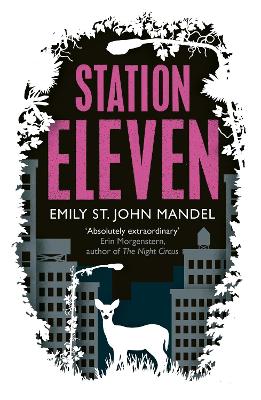
Shortlisted for the 2014 National Book Awards Observer Thriller of the Month DAY ONE The Georgia Flu explodes over the surface of the earth like a neutron bomb. News reports put the mortality rate at over 99%. WEEK TWO Civilization has crumbled. YEAR TWENTY A band of actors and musicians called the Travelling Symphony move through their territories performing concerts and Shakespeare to the settlements that have grown up there. Twenty years after the pandemic, life feels relatively safe. But now a new danger looms, and he threatens the hopeful world every survivor has tried to rebuild. STATION ELEVEN Moving backwards and forwards in time, from the glittering years just before the collapse to the strange and altered world that exists twenty years after, Station Eleven charts the unexpected twists of fate that connect six people: famous actor Arthur Leander; Jeevan - warned about the flu just in time; Arthur's first wife Miranda; Arthur's oldest friend Clark; Kirsten, a young actress with the Travelling Symphony; and the mysterious and self-proclaimed 'prophet'. Thrilling, unique and deeply moving, Emily St.
John Mandel's Station Eleven is a beautiful novel that asks questions about art and fame and about the relationships that sustain us through anything - even the end of the world.
Station Eleven talks about life before and after an influenza epidemic that wipes out 99.9% of the human race. It's a fast-acting agent, and most of humanity is dead within a week. We follow five different characters who all had a common thread - knowing (or being) actor Arthur Leander - and find out what happened to them before, after, and during the outbreak.
I really enjoyed the dystopian world this is set in. Most dystopias go for a post-war fallout, but Station Eleven focuses on a before, during, and after of an influenza epidemic. Emily St. John Mandel's writing style is pretty, but not overly flowery. It's also written in multiple POVs, which is my favorite! Of course, the problem with multiple POVs is that when you get particularly attached to a character, it takes forever to get back to that POV.
There are definite flaws. For one - the pacing lags enough that the plot feels pretty disconnected and the story becomes more of a slice of life than a linear plot. Which is perfectly fine, but generally speaking, it's not my cup of tea. So while I did generally enjoy the characters and I LOVED the world-building, the scattered pot and pacing are what kept it from being a five star read.
Reading updates
-
Started reading
-
19 December, 2018:
Finished reading
-
19 December, 2018:
Reviewed
